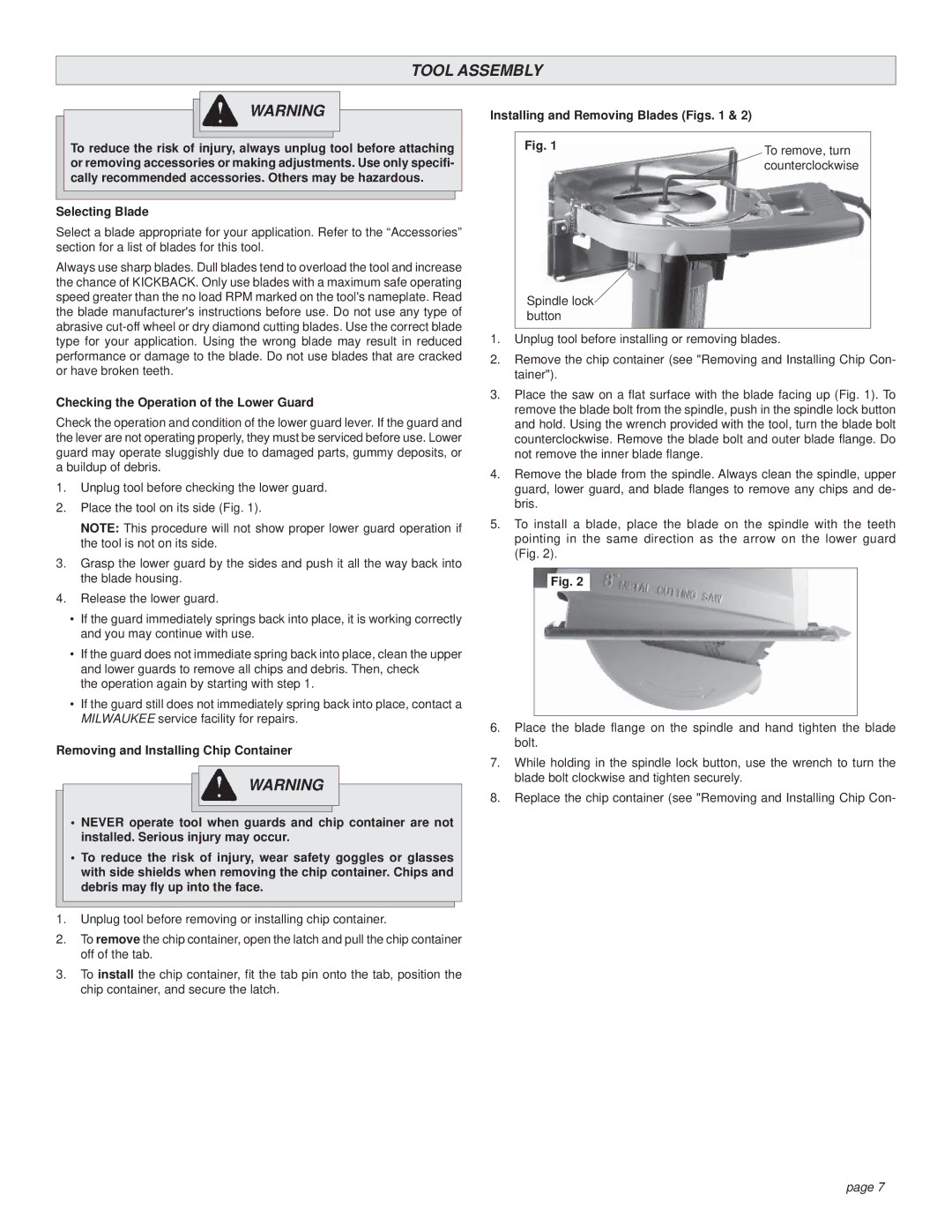
TOOL ASSEMBLY
WARNING
To reduce the risk of injury, always unplug tool before attaching or removing accessories or making adjustments. Use only specifi- cally recommended accessories. Others may be hazardous.
Selecting Blade
Select a blade appropriate for your application. Refer to the “Accessories” section for a list of blades for this tool.
Always use sharp blades. Dull blades tend to overload the tool and increase the chance of KICKBACK. Only use blades with a maximum safe operating speed greater than the no load RPM marked on the tool's nameplate. Read the blade manufacturer's instructions before use. Do not use any type of abrasive
Checking the Operation of the Lower Guard
Check the operation and condition of the lower guard lever. If the guard and the lever are not operating properly, they must be serviced before use. Lower guard may operate sluggishly due to damaged parts, gummy deposits, or a buildup of debris.
1.Unplug tool before checking the lower guard.
2.Place the tool on its side (Fig. 1).
NOTE: This procedure will not show proper lower guard operation if the tool is not on its side.
3.Grasp the lower guard by the sides and push it all the way back into the blade housing.
4.Release the lower guard.
•If the guard immediately springs back into place, it is working correctly and you may continue with use.
•If the guard does not immediate spring back into place, clean the upper and lower guards to remove all chips and debris. Then, check
the operation again by starting with step 1.
•If the guard still does not immediately spring back into place, contact a MILWAUKEE service facility for repairs.
Removing and Installing Chip Container
WARNING
•NEVER operate tool when guards and chip container are not installed. Serious injury may occur.
•To reduce the risk of injury, wear safety goggles or glasses with side shields when removing the chip container. Chips and debris may fly up into the face.
1.Unplug tool before removing or installing chip container.
2.To remove the chip container, open the latch and pull the chip container off of the tab.
3.To install the chip container, fit the tab pin onto the tab, position the chip container, and secure the latch.
Installing and Removing Blades (Figs. 1 & 2)
Fig. 1 | To remove, turn |
| counterclockwise |
Spindle lock button
1.Unplug tool before installing or removing blades.
2.Remove the chip container (see "Removing and Installing Chip Con- tainer").
3.Place the saw on a flat surface with the blade facing up (Fig. 1). To remove the blade bolt from the spindle, push in the spindle lock button and hold. Using the wrench provided with the tool, turn the blade bolt counterclockwise. Remove the blade bolt and outer blade flange. Do not remove the inner blade flange.
4.Remove the blade from the spindle. Always clean the spindle, upper guard, lower guard, and blade flanges to remove any chips and de- bris.
5.To install a blade, place the blade on the spindle with the teeth pointing in the same direction as the arrow on the lower guard (Fig. 2).
Fig. 2
6.Place the blade flange on the spindle and hand tighten the blade bolt.
7.While holding in the spindle lock button, use the wrench to turn the blade bolt clockwise and tighten securely.
8.Replace the chip container (see "Removing and Installing Chip Con-
page 7
